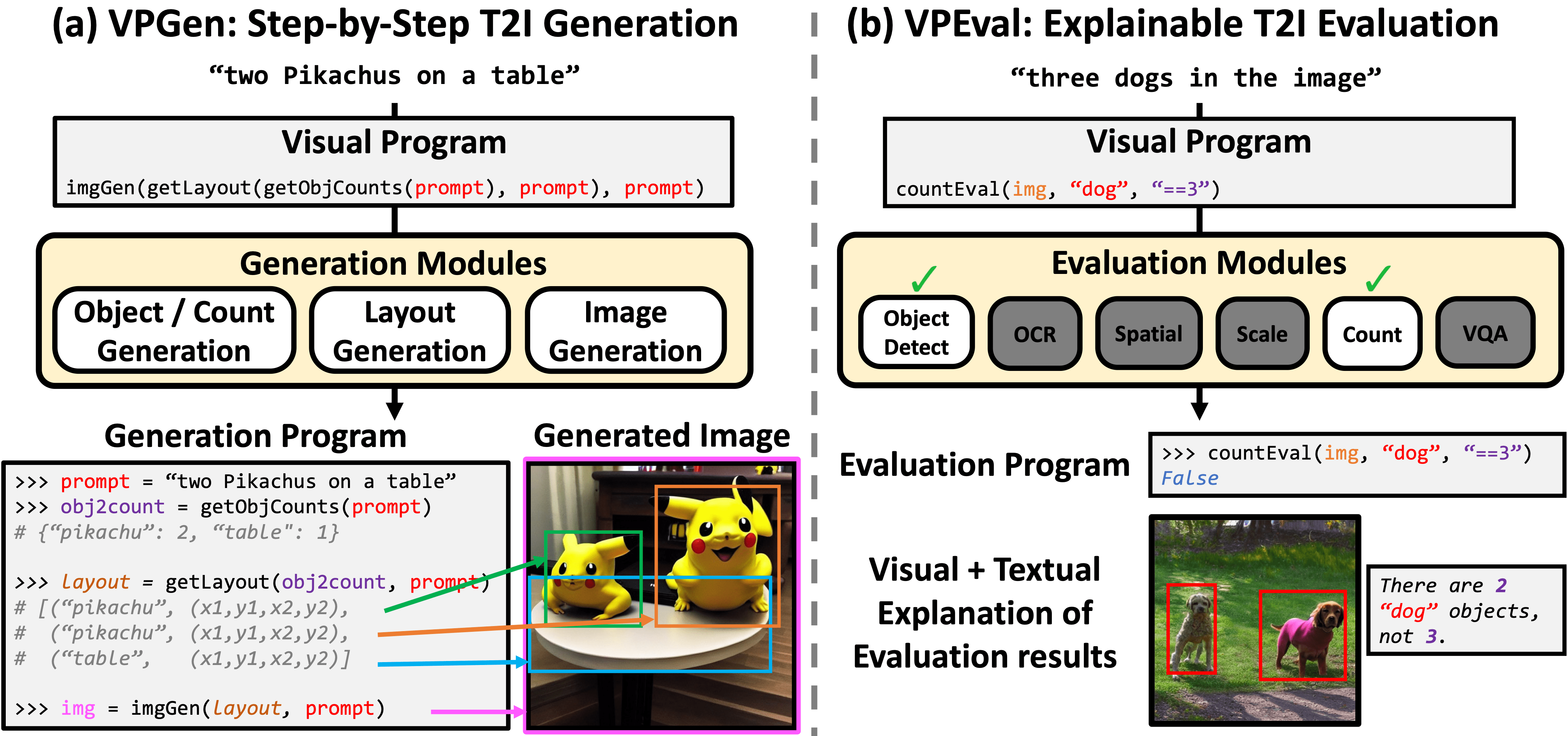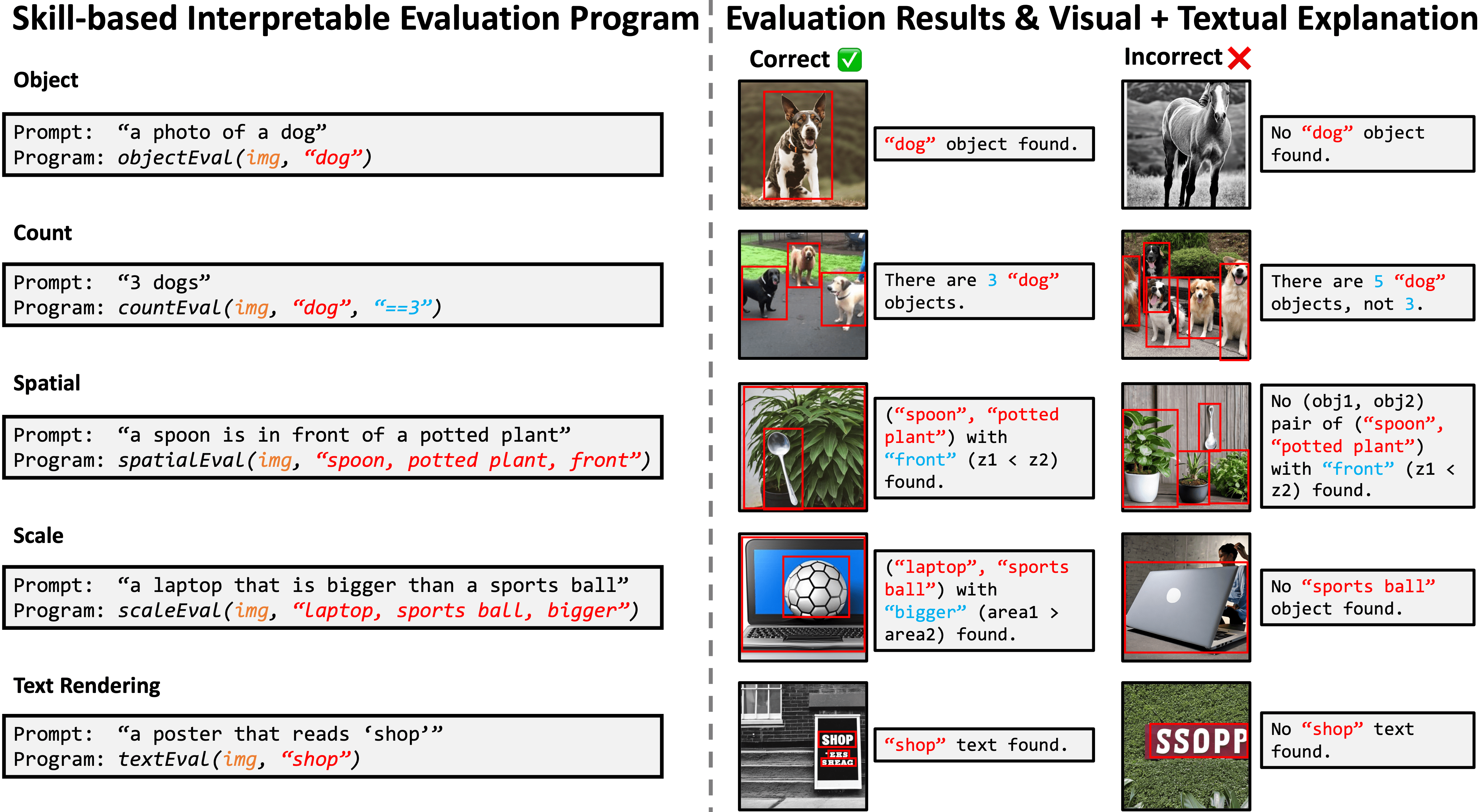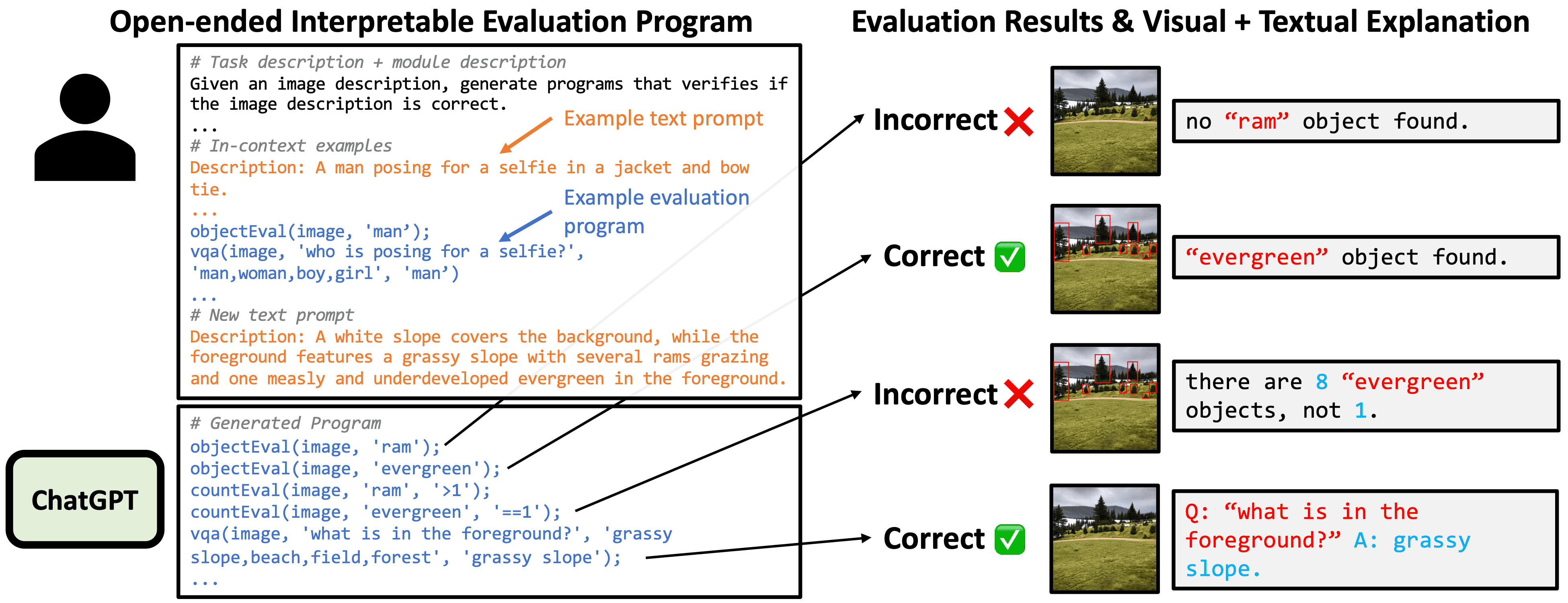Summary

As large language models have demonstrated impressive performance in many domains, recent works have adopted language models (LMs) as controllers of visual modules for vision-and-language tasks. While existing work focuses on equipping LMs with visual understanding, we propose two novel interpretable/explainable visual programming frameworks for text-to-image (T2I) generation and evaluation.
First, we introduce VPGen, an interpretable step-by-step T2I generation framework that decomposes T2I generation into three steps: object/count generation, layout generation, and image generation. We employ an LM to handle the first two steps (object/count generation and layout generation), by finetuning it on text-layout pairs. Our step-by-step T2I generation framework provides stronger spatial control than end-to-end models, the dominant approach for this task. Furthermore, we leverage the world knowledge of pretrained LMs, overcoming the limitation of previous layout-guided T2I works that can only handle predefined object classes. We demonstrate that our VPGen has improved control in counts/spatial relations/scales of objects than state-of-the-art T2I generation models.
Second, we introduce VPEval, an interpretable and explainable evaluation framework for T2I generation based on visual programming. Unlike previous T2I evaluations with a single scoring model that is accurate in some skills but unreliable in others, VPEval produces evaluation programs that invoke a set of visual modules that are experts in different skills, and also provides visual+textual explanations of the evaluation results. Our analysis shows that VPEval provides a more human-correlated evaluation for skill-specific and open-ended prompts than widely used single model-based evaluation.
We hope that our work encourages future progress on interpretable/explainable generation and evaluation for T2I models.




Although our evaluation with skill-specific prompts covers five important and diverse image generation skills, user-written prompts can sometimes be even more complex and need multiple evaluation criteria. To handle such open-ended prompts, we extend the VPEvaL setup with evaluation programs using many visual modules together. We generate open-ended prompt evaluation programs with an LLM, then the evaluation programs output the average score and the visual+textual explanations from their visual modules. The program generation involves choosing which prompt elements to evaluate and which modules will evaluate those elements.
As annotation of evaluation programs with open-ended prompts can be expensive, we use ChatGPT to generate evaluation programs via in-context learning. As illustrated in the figure below, we give ChatGPT the list of visual modules and example text prompts and programs, then ask the model to generate a program given a new prompt. For reproducible and accessible evaluation, we release the evaluation programs so that VPEval users do not have to generate the programs. We will also release a public LM (finetuned for evaluation program generation using ChatGPT outputs) that can run on local machines.

@inproceedings{Cho2023VPT2I,
author = {Jaemin Cho and Abhay Zala and Mohit Bansal},
title = {Visual Programming for Text-to-Image Generation and Evaluation},
booktitle = {NeurIPS},
year = {2023},
}